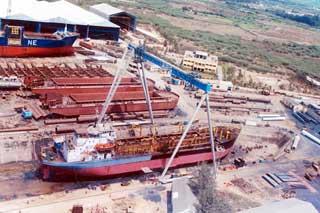INDIA stands ready to share its experience of parliamentary democracy with Myanmar, the countrys foreign minister, Mr S M Krishna, told President U Thein Sein and other senior members of the government last week.
A statement released by the Indian embassy in Yangon following Mr Krishnas three-day visit, which ended on June 22, said the external affairs minister also relayed his governments support for the cause of national reconciliation and democratic progress in an inclusive manner.
He also informed that India stands ready to share its wealth of experience in parliamentary democracy through exchange of parliamentary delegations [and] training, the statement said.
The visit was the first by a senior Indian official since Myanmars new government was sworn in on March 30. Mr Krishna, who was accompanied by foreign secretary Ms Nirupama Rao, met President U Thein Sein, Vice President Thiha Thura U Tin Aung Myint Oo, the speakers of the national legislatures, Foreign Affairs Minister U Wunna Maung Lwin and Minister for Electric Power 1 U Zaw Min in Nay Pyi Taw.
The statement said talks focused on matters of bilateral and regional importance, including exchange of visits, security and neighbourly ties, trade and economic cooperation, cooperation in developmental projects, agriculture, energy, health, education and training.
Mr Krishna also handed over ownership of 10 500-tonne rice silos collectively valued at US$2 million, which have been constructed in Yangon and Ayeyarwady regions, and provided $750,000 for the reconstruction of seven schools destroyed in the Tarlay earthquake in March.
However, just one memorandum of understanding was signed for an Indo-Myanmar training centre based at Myingyan in Mandalay Region and the visit took place against a backdrop of growing economic and political ties between Myanmar and China.
In the 2010-11 fiscal year China overtook Thailand to be Myanmars largest trade partner and source of foreign investment, pledging almost $14 billion for a raft of energy projects.
Dr Marie Lall, a South Asia analyst based at the University of London, said China had been able to gain the ascendancy in Myanmar because of a lack of common vision among different ministries that make up the Indian government.
Little progress had been made on major agreements signed in early 2009 and India was uncomfortable to see so much Chinese influence in Myanmar, particularly in the Bay of Bengal.
I suspect that Indias foreign minister is visiting in order to see how the agreements can be moved forward. I also believe that it is Indias aim to establish closer links with the new government and to see how much structural change has actually taken place, she said.
One project on which India has failed to make progress is the $3 billion, 1200 megawatt Tamanthi hydropower plant in Sagaing Region, which is being constructed by Indias National Hydroelectric Power Corporation. The likelihood of the dam not being completed on time reportedly prompted the Indian ambassador to Myanmar to suggest the project be aborted rather than go ahead and harm the image of Indian companies but many see it as vital to Indias interests here.
In a recent commentary, the New Delhi-based Institute for Defence Studies and Analyses called on the Indian government to press ahead with the project in order to enhance its economic and strategic reach in the East.
The Tamanthi dam should not be perceived as a project meant for mere generation of electricity, researcher Shivananda H wrote in the June 15 piece. It has many strategic implications for India both from economic and security perspectives in enhancing the bilateral relationship with Myanmar.
Dr Lall agreed the Tamanthi project was vital and said it was Indias challenge to establish closer ties with the new Myanmar government.
India looks to reset ties with Myanmar















